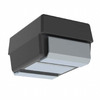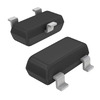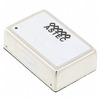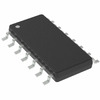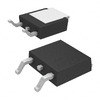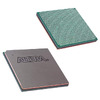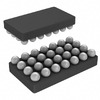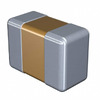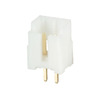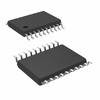A Beginner’s Guide to ESP-01, ESP-05, ESP-12, and ESP-201 Modules and Test Boards
If you're working on IoT projects, choosing the right ESP module can make all the difference. This article explores various ESP modules and their unique features, including the ESP-01, ESP-05, ESP-12, and ESP-201. You'll also learn about the different test boards available, their configurations, and how they fit into your projects. By understanding these modules and test boards, you can find the right options that suit your development needs and help streamline your project workflows.Catalog

Comparison of Bare Modules
| Feature | ESP-01 | ESP-05 | ESP-12 | ESP-201 | Testboard |
| GPIO Pins | 2 | - | 11 | 11 | 11 |
| ADC | - | - | 1 | 1 | 1 |
| Antenna | PCB | PCB | PCB | External/PCB | PCB |
| USB-To-Serial | No | No | No | No | - |
| Breadboard Friendly | Medium | Good | Bad | Good | Bad |
| Form Factor | Small | Small | Medium | Big | Very Big |
| Price | ~$3 | ~$3 | ~$3 | ~$3 | ~$6.50 |
| Application | Simple Standalone mode or Wi-Fi shield for Arduino | Wi-Fi Shield | Standalone | Standalone | Prototyping |
Comparison of Development Modules
| Feature | NodeMCU V0.9 | NodeMCU V1.0 | Wemos D1 Mini | Wemos D1 R2 | LoLin V3 NodeMCU Board |
| Branded | NodeMCU | DOIT | Wemos | Wemos | LoLin |
| GPIO Pins | 11 | 11 | 11 | 11 | 11 |
| ADC | 1 | 1 | 1 | 1 | 1 |
| Antenna | PCB | PCB | PCB | PCB | PCB |
| ESP8266 Module | ESP12 (AI-Thinker) | ESP12 (AI-Thinker) | ESP12E (Wemos) | ESP12E (Wemos) | ESP12E (AI-Thinker) |
| USB-To-Serial | Yes | Yes | Yes | Yes | Yes |
| Serial Chip | CH340G | CP2102/CH340G | CH340G | CH340G | CH340G |
| Breadboard | Bad (covers many pins) | Very Good | Very Good (after soldering) | Bad (Arduino Form Factor) | Bad (covers many pins) |
| Form Factor | Big | Big | Medium | Very Big | Big |
| Application | Development Beginner | Development Beginner | Development Advanced (soldering required) | Development Form compatibility with Arduino Shields | Development Beginne |
ESP-01
The ESP-01 is a compact and widely used Wi-Fi module, measuring just 24.75mm by 14.5mm. Its small size makes it a popular choice for various applications, though it comes with some limitations you need to keep in mind. The module includes two GPIO pins, which allow for basic control over external devices and peripherals. When connected with a serial-to-USB adapter, you can easily flash different firmware versions onto the ESP-01. It usually comes pre-loaded with AT firmware, making it compatible with Arduino systems. However, its pin layout can be challenging, as the closely spaced rows make it difficult to use on standard breadboards. This setup increases the risk of short circuits, but using a breadboard adapter or female-to-male DuPont wires can help secure the connections.
Built around the ESP8266 chip, the ESP-01 offers reliable Wi-Fi connectivity and supports TCP/IP protocols, making it ideal for networking tasks. Its two GPIO pins do limit expansion options, but the module is still easy to use and well-suited for straightforward applications. It operates at voltages between 3.0V and 3.6V, ensuring stable performance when used correctly.
The ESP-01 is commonly used in projects that require wireless communication, such as home automation systems, remote sensor networks, and other IoT devices. Its ease of use and compatibility with Arduino make it a go-to option for adding basic connectivity to your projects. Integrating the ESP-01 can enhance your project’s functionality by enabling real-time data transmission and remote control features.
Despite its benefits, the small size of the ESP-01 can pose challenges, particularly when used on standard breadboards. The proximity of the pins increases the likelihood of short circuits. To address this, you can use specialized adapters or female-to-male DuPont wires, which offer more secure connections and maintain the module’s flexibility in various setups.
ESP-05
The ESP-05 is a small Wi-Fi module that provides wireless connectivity to microcontrollers like Arduino. It typically comes with a four-pin setup: 3.3V, GND, RX, and TX. There’s also a version with an additional reset pin, making it easier to reset the module during development. This simple pin configuration allows for easy integration with breadboards, enabling quick prototyping and testing.
With its basic setup, the ESP-05 includes a power pin (3.3V), a ground pin (GND), and two data pins (RX and TX), making it suitable for straightforward projects. The version with the reset pin makes frequent resets more convenient, saving time during testing without the need to disconnect the module.
The ESP-05's design fits well into standard breadboards, making hardware configurations easy and quick to set up. This simplifies prototyping, letting you get started with experiments right away.
The module usually comes with preloaded firmware, and you might need to make adjustments—such as cutting leads or adding new pins—to ensure it works properly with certain microcontroller libraries. Variations in firmware can require you to troubleshoot and adapt the setup for your specific project needs. This process lets you customize the module according to your project, enhancing its functionality and allowing for a more hands-on experience.
ESP-12
The ESP-12 module is known for its flexibility and rich set of features, including 11 GPIO pins and a 10-bit ADC. This range of functionality makes it adaptable for various projects, allowing you to use it in many different scenarios. A notable advantage of the ESP-12 is its simple configuration for deep-sleep mode, which significantly boosts energy efficiency.
When optimized, the module can operate for up to three years on just two AA batteries, making it an excellent choice for low-power, long-term projects. However, despite its benefits, the ESP-12 can be challenging to work with during prototyping since it doesn’t fit standard breadboards. This can make initial setup and testing a bit tricky.
To address this issue, you can use breakout boards or specially designed adapters that enable easier connection with breadboards. These solutions ensure that you can still utilize all the module's features without compromising on convenience during development.
The ESP-12's popularity also stems from the easy access to its key chip pins, making it a preferred choice for standalone projects and earlier NodeMCU versions. This accessibility allows you to add more features and make custom modifications as needed.
With its comprehensive capabilities, the ESP-12 often serves as a core component in complex projects, reducing the need for additional external components. Its simple configuration makes it ideal for projects that require precise control over multiple I/O operations, helping you create efficient and compact designs.
ESP-201
The ESP-201 Wi-Fi module, originally named ESP-12, was rebranded to prevent naming conflicts and make it easier for users to identify. This change helps differentiate it from other modules, minimizing confusion and simplifying development.
Designed for compatibility with breadboards, the ESP-201 provides easy access to its pins, making it a popular choice for prototyping. To fit it correctly onto a breadboard, you might need to bend or unsolder the four front pins. While this modification may seem inconvenient, it greatly enhances the module’s flexibility and usability in various projects.
The ESP-201 comes with a built-in printed PCB antenna that works well for short-range communication, but it also includes an external antenna connector to extend its range for longer-distance applications. By connecting a high-gain antenna, you can significantly boost signal strength and sensitivity, which is particularly useful for scenarios requiring strong connectivity, such as home automation or complex IoT setups.
Many users have successfully utilized the external antenna connector to increase Wi-Fi range in different projects, highlighting the module’s adaptability. Although the initial pin modifications may appear cumbersome, they allow for broader usage options, showcasing the ESP-201's versatility and reliable performance in real-world applications.
Test Boards for ESP Modules
Test boards come in various forms, each equipped with basic components like a battery pack, LEDs, a light-dependent resistor connected to the ADC, and an ESP-12 module. Many of these boards include a jumper for easy firmware flashing and a voltage regulator that converts the 4.5V from the battery pack to the 3.3V needed by the ESP8266. You can also replace the battery pack with USB power lines if necessary. Typically, these test boards serve two main purposes: they can be used as standalone nodes powered by a battery pack or for quickly testing code with pre-configured peripherals. Notably, one of these models has operated for over 1000 hours on just three AA batteries, showcasing its efficiency.
The module itself comes with a serial-to-USB adapter and a micro USB plug, making it quick to set up. While it was designed to streamline development with the ESP8266, it faced some issues with firmware flashing on certain systems. The module’s form factor can also block access to some breadboard pins, requiring bridge wires to connect those pins. Despite these drawbacks and a slightly higher cost, the module still proves highly valuable for development projects. Upcoming updates are expected to resolve these issues, aiming to make it a more versatile solution for Arduino-based IoT nodes.
The challenges faced by the V0.9 module highlight some of the complexities in hardware design. Issues such as firmware flashing difficulties often stem from compatibility problems that are common with early-stage technology. The limited access to breadboard pins further emphasizes the need for more user-friendly design considerations in prototyping tools. Expected future revisions will likely address these problems, leading to better usability and functionality driven by user feedback.
The latest NodeMCU version now uses the updated ESP-12E module, which offers 4MB of flash memory and additional pin-outs. This design fits more securely on a standard breadboard, leaving one row of pins accessible on each side. The module also automates the reset/flash button combination in the Arduino IDE and supports faster code upload speeds of up to 921600 baud. Although it is a bit more expensive, it eliminates the need for additional hardware like a serial-to-USB converter, making it a preferred choice for IoT projects.
Further improvements in the V1.0 module make it even more suitable for IoT development. With increased flash memory and additional pin-outs, it allows for more advanced applications. The streamlined code upload process saves time and minimizes the chance of errors, which is especially useful during development. By removing the need for extra hardware, the V1.0 module effectively reduces cost and complexity, making it a practical choice for various real-world projects.
Conclusion
By understanding the unique features and uses of different ESP modules like the ESP-01, ESP-05, ESP-12, and ESP-201, as well as the various test boards, you’ll be able to choose the best components for your IoT projects. Each module has its own strengths and challenges, whether it’s the compact design of the ESP-01, the straightforward setup of the ESP-05, or the flexibility of the ESP-12 and ESP-201. With this knowledge, you can select the right tools to simplify your development process, reduce setup time, and create more efficient projects.
About us
ALLELCO LIMITED
Read more
Quick inquiry
Please send an inquiry, we will respond immediately.
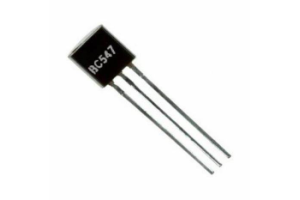
Comprehensive Guide to 547 Transistor Types and Their Applications
on October 7th

All About the 1N5408 Power Diode: Pinout, Features, and Uses
on October 7th
Popular Posts
-

What is GND in the circuit?
on January 1th 2933
-

RJ-45 Connector Guide: RJ-45 Connector Color Codes, Wiring Schemes, R-J45 Applications, RJ-45 Datasheets
on January 1th 2486
-

Fiber Connector Types: SC Vs LC And LC Vs MTP
on January 1th 2079
-

Understanding Power Supply Voltages in Electronics VCC, VDD, VEE, VSS, and GND
on November 8th 1872
-

Comparison Between DB9 and RS232
on January 1th 1759
-

What Is An LR44 Battery?
Electricity, that ubiquitous force, quietly permeates every aspect of our daily lives, from trivial gadgets to life-threatening medical equipment, it plays a silent role. However, truly grasping this energy, especially how to store and efficiently output it, is no easy task. It is against this background that this article will focus on a type of coin cell battery that may seem insignificant on the...on January 1th 1709
-

Understanding the Fundamentals:Inductance Resistance, andCapacitance
In the intricate dance of electrical engineering, a trio of fundamental elements takes center stage: inductance, resistance, and capacitance. Each bears unique traits that dictate the dynamic rhythms of electronic circuits. Here, we embark on a journey to decipher the complexities of these components, to uncover their distinct roles and practical uses within the vast electrical orchestra. Inductan...on January 1th 1649
-

CR2430 Battery Comprehensive Guide: Specifications, Applications and Comparison to CR2032 Batteries
What is CR2430 battery ?Benefits of CR2430 BatteriesNormCR2430 Battery ApplicationsCR2430 EquivalentCR2430 VS CR2032Battery CR2430 SizeWhat to look for when buying the CR2430 and equivalentsData Sheet PDFFrequently Asked Questions Batteries are the heart of small electronic devices. Among the many types available, coin cells play a crucial role, commonly found in calculators, remote controls, and ...on January 1th 1537
-

What Is RF and Why Do We Use It?
Radio Frequency (RF) technology is a key part of modern wireless communication, enabling data transmission over long distances without physical connections. This article delves into the basics of RF, explaining how electromagnetic radiation (EMR) makes RF communication possible. We will explore the principles of EMR, the creation and control of RF signals, and their wide-ranging uses. The article ...on January 1th 1532
-

CR2450 vs CR2032: Can The Battery Be Used Instead?
Lithium manganese batteries do have some similarities with other lithium batteries. High energy density and long service life are the characteristics they have in common. This kind of battery has won the trust and favor of many consumers because of its unique safety. Expensive tech gadgets? Small appliances in our homes? Look around and you'll see them everywhere. Among these many lithium-manganes...on January 1th 1500


